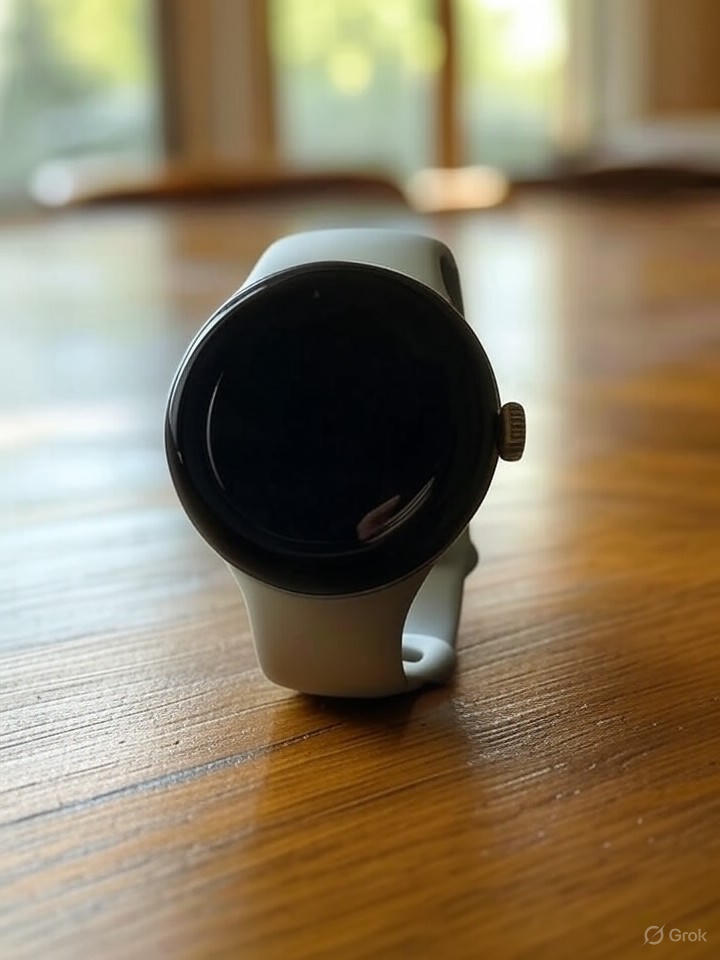Google’s latest Pixel Watch 4 represents a pinnacle of integration between smartwatch sophistication and fitness tracking, boasting features like dual-band GPS, satellite SOS, and enhanced AI capabilities powered by Gemini. Yet, for many longtime users of wearable tech, this evolution underscores a poignant nostalgia for the simpler, more focused era of standalone Fitbit watches. The Pixel Watch 4, unveiled at Made by Google 2025, builds on its predecessors with a brighter display, replaceable battery, and over 40 exercise modes, but it also highlights how Google’s acquisition of Fitbit in 2021 has shifted priorities toward a unified ecosystem that sometimes sacrifices the charm of Fitbit’s dedicated fitness bands.
This shift is evident in the device’s design and functionality. The Pixel Watch 4’s domed display and sleek aesthetics prioritize style and smart features, such as AI-driven health insights and emergency connectivity, over the no-frills durability that defined Fitbit’s Versa or Charge lines. Industry observers note that while the Watch 4 excels in accuracy—thanks to what Android Central describes as “the most accurate route tracking possible” via its cutting-edge dual-frequency GPS—it demands more from users in terms of charging frequency and app navigation, elements that Fitbit watches handled with effortless longevity.
The Erosion of Simplicity in Wearable Tech
Critics argue that the Pixel Watch 4’s advancements come at the cost of accessibility. For instance, Fitbit’s older models offered multi-week battery life and straightforward interfaces tailored purely for health metrics, without the bloat of full Wear OS integrations. Now, as Android Authority points out, the Watch 4 still fails to resolve longstanding issues like proper multi-device support in the Fitbit ecosystem, potentially frustrating users who juggle multiple gadgets for comprehensive coaching.
This yearning for a Fitbit revival stems from economic and practical realities. Standalone Fitbit watches were often more affordable, appealing to a broader audience beyond tech enthusiasts. The Pixel Watch 4, priced as a premium device, integrates Fitbit’s app with a Material 3 Expressive redesign—featuring vibrant colors and bubbly fonts, as detailed by Android Police—but this polish can feel overwhelming compared to Fitbit’s minimalist dashboards.
Balancing Innovation with User-Centric Roots
Google’s strategy post-acquisition has funneled Fitbit’s expertise into the Pixel lineup, effectively phasing out new standalone Fitbit smartwatches. A 2024 piece from Android Central lamented how the Pixel Watch 3’s running features, now amplified in the Watch 4, overshadow the demise of accessible Fitbit alternatives. Insiders suggest this could alienate casual fitness trackers who preferred Fitbit’s ecosystem for its independence from Google’s broader Android universe.
Moreover, the Pixel Watch 4’s emphasis on AI and satellite features, while innovative, raises questions about privacy and data integration. Fitbit watches operated with a lighter touch on personal data, focusing on core metrics like steps and sleep without aggressive AI upselling. As Digital Trends explored, users often wish for tweaks like better battery management to make the device more approachable, echoing Fitbit’s user-friendly ethos.
A Call for Hybrid Solutions in the Market
The industry’s push toward convergence isn’t unique to Google; competitors like Apple and Samsung blend fitness with smart capabilities, but Fitbit’s legacy offered a counterpoint for those seeking purity in tracking. The Pixel Watch 4’s hands-on reviews, such as those from Engadget, praise its thoughtful improvements, including a redesigned Fitbit app, yet they also highlight how it might not fully replace the void left by dedicated Fitbit hardware.
For executives and developers in wearable tech, this evolution signals a need to revisit segmented product lines. Reviving standalone Fitbit watches could recapture market segments lost to the Pixel’s premium positioning, ensuring that fitness-focused users aren’t forced into smartwatch complexity. As Tom’s Guide reflected on the Pixel Watch 3, many see these devices as “glorified Fitbits,” begging the question: why not bring back the original for those who want just that?
Future Implications for Google’s Wearable Strategy
Looking ahead, Google’s integration of Fitbit into Pixel could either solidify its dominance or prompt backlash if user feedback continues to favor simplicity. Deals like those spotted by Android Central, offering discounts for upgrading from older models, incentivize adoption, but they don’t address the core nostalgia. Industry insiders speculate that a hybrid approach—perhaps a budget Fitbit line with optional smart features—might bridge the gap, preserving the brand’s heritage while advancing tech.
Ultimately, the Pixel Watch 4’s sophistication amplifies a collective sigh for Fitbit’s return, reminding us that in the rush for innovation, the essence of user-centric design should not be overlooked. As wearable tech matures, balancing cutting-edge features with accessible roots will define market leaders.




 WebProNews is an iEntry Publication
WebProNews is an iEntry Publication